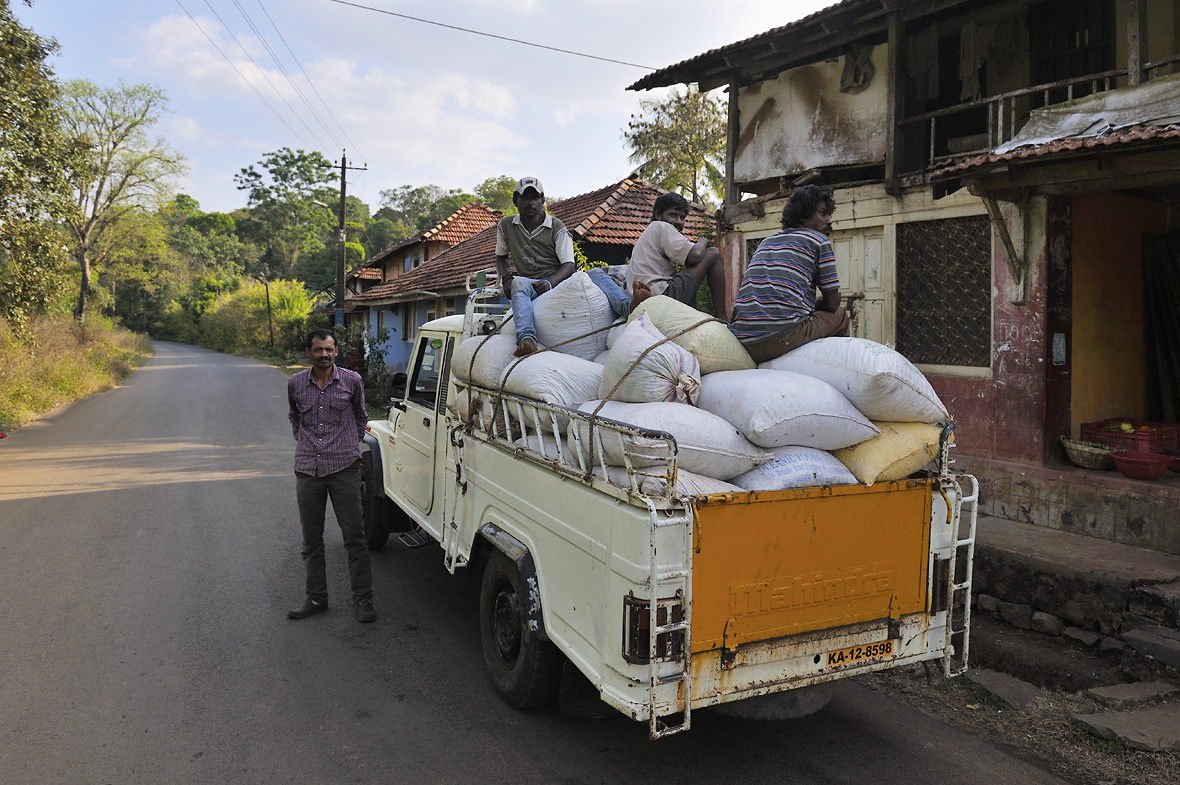
Short break while transporting in Kabbinakad |
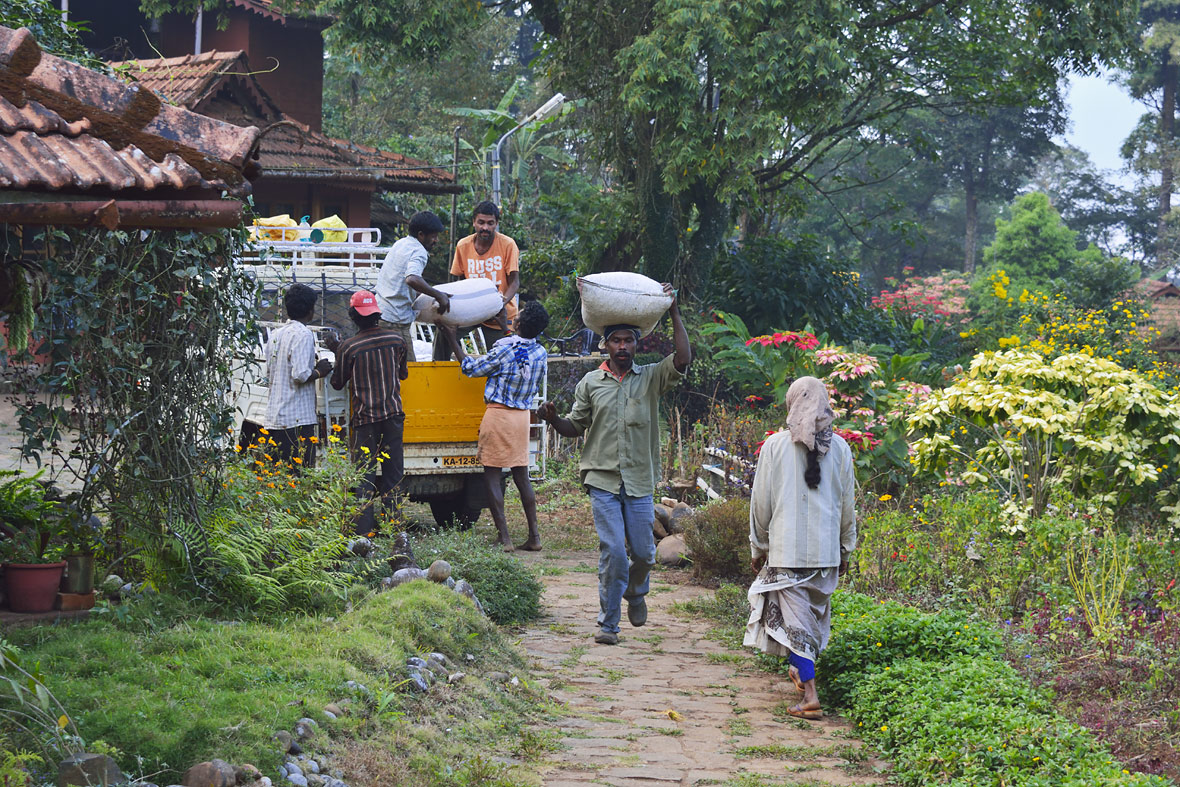
Workers unload the coffee at the drying spots
|
Some of Suresh
Chengappa's fields are located at a distance from the main
plantations. After harvesting, the coffee must be transported to
the drying areas on the farm, which is done in part using fairly
heavy bags. As the workers are paid according to the amount of coffee
harvested, each coffee bag is weighed before the coffee is spread out
to dry. The weights are noted per person as basis for weekly wages each
Tuesday. A fixed worker gets 3 INR per kilo of harvested coffee
cherries whereas a seasonal worker gets 2 INR per kilo*. On average
they manage to harvest about 100-135 kilos of coffee cherries in a day.
This is an approximate salary of 6,000-8,000 INR per month.
-
- -
*= At the time of writing in February 2014, the exchange rate was 1 € : 84 INR)
- - -
Farm with drying areas
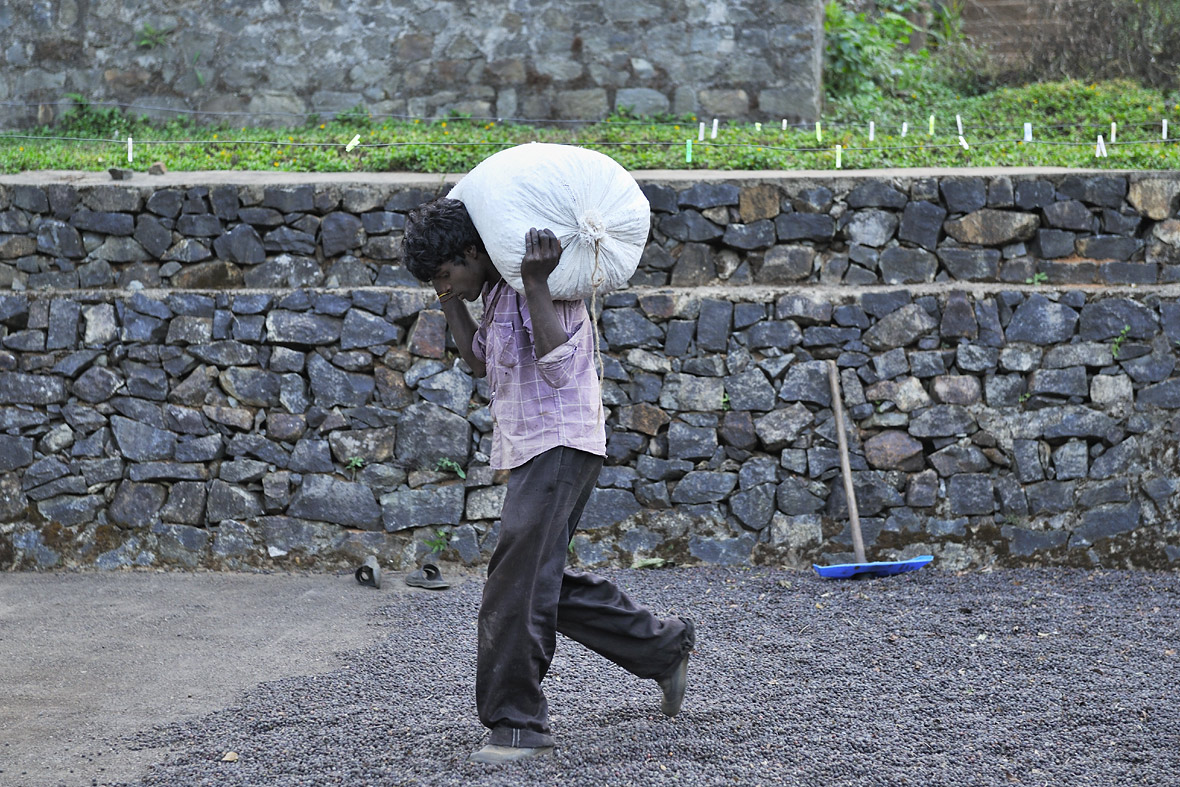
Everyone has their own technique |
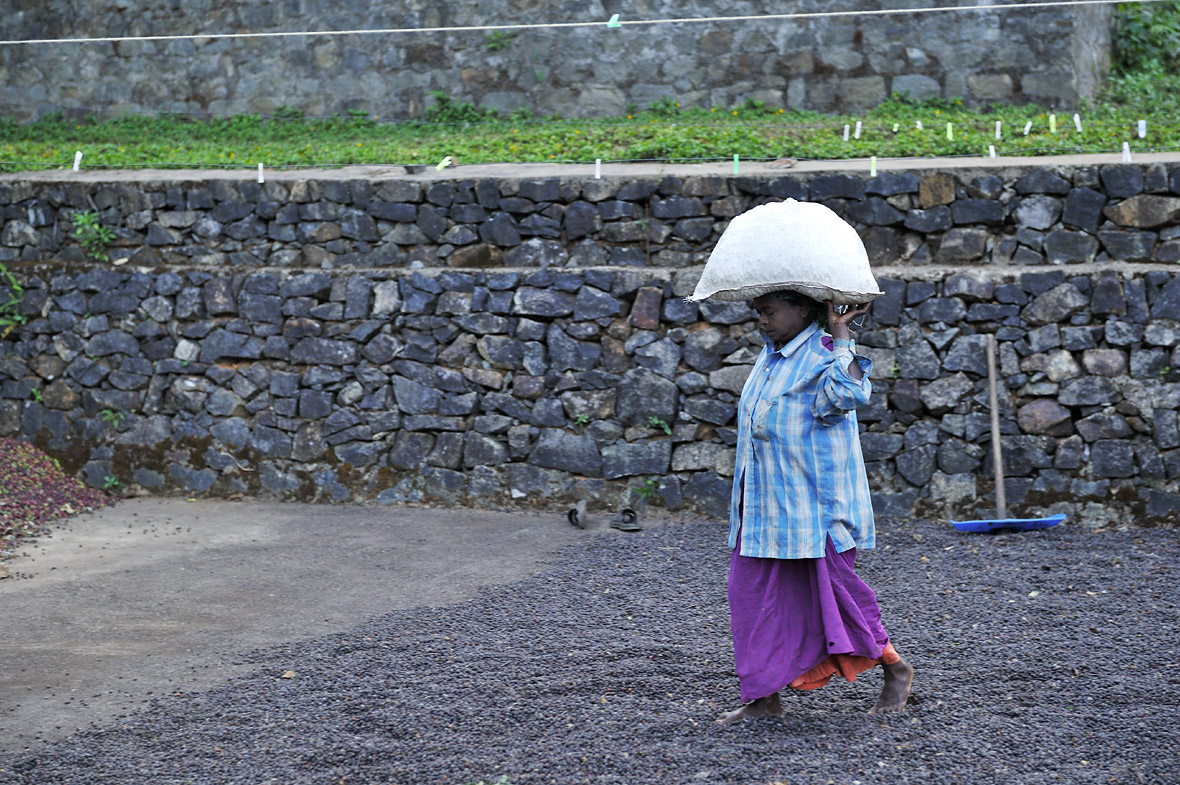
Even the women carry heavy sacks
|
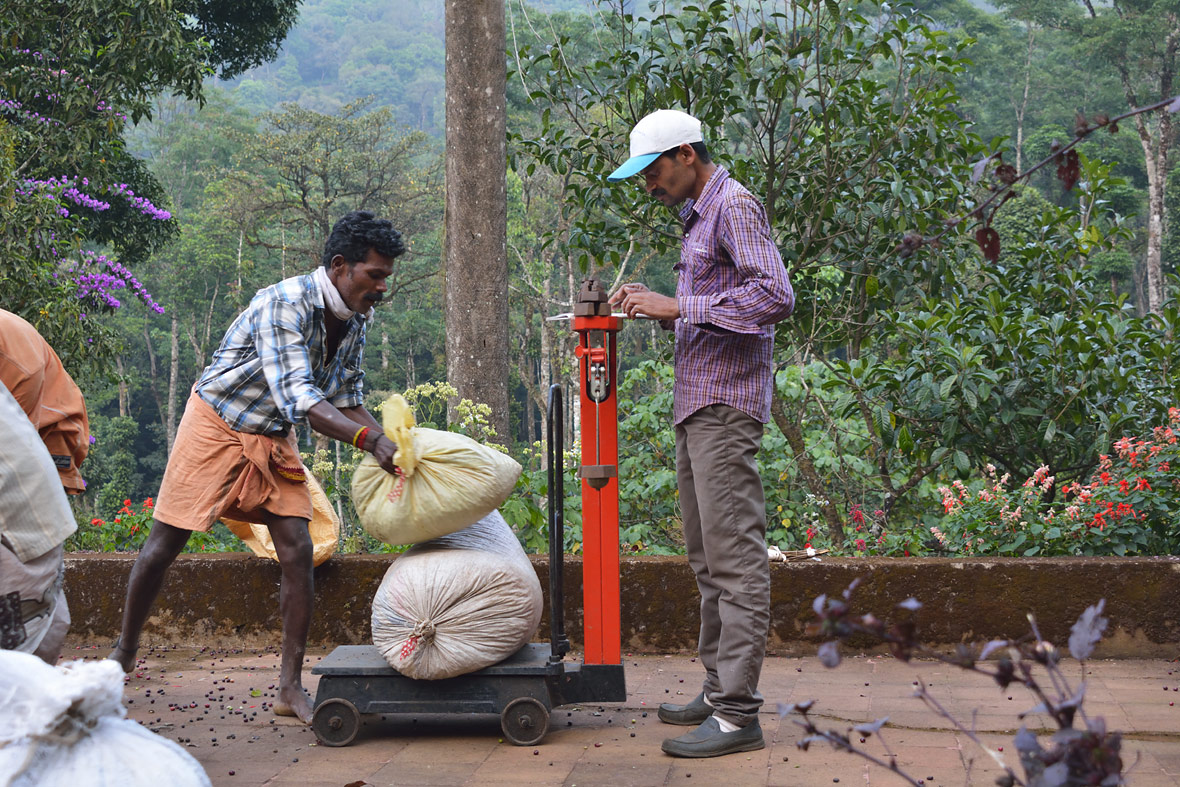
The coffee sacks are weighed ...
As previously described, the wages are traditionally paid on Tuesdays
in this region, so that nobody shows up to work on Wednesdays and
Thursdays, but instead on Saturdays and Sundays. As far as the low
wages are concerned, it is also worth keeping in mind that many of the
workers can live almost free of cost or at very low rates on the farm.
In addition, the state provides school-going children with school
uniforms and text books, as well as one meal a day at the school
including transport to and fro school. Similarly, basic food and gas
are also heavily subsidised by the state. As a comparison with the
earnings per kilo of harvested coffee: In 2012 the average retail price
of green coffee in Bangalore was 288 INR per kilo for Arabica Coffee
and 130 INR per kilo for Robusta.
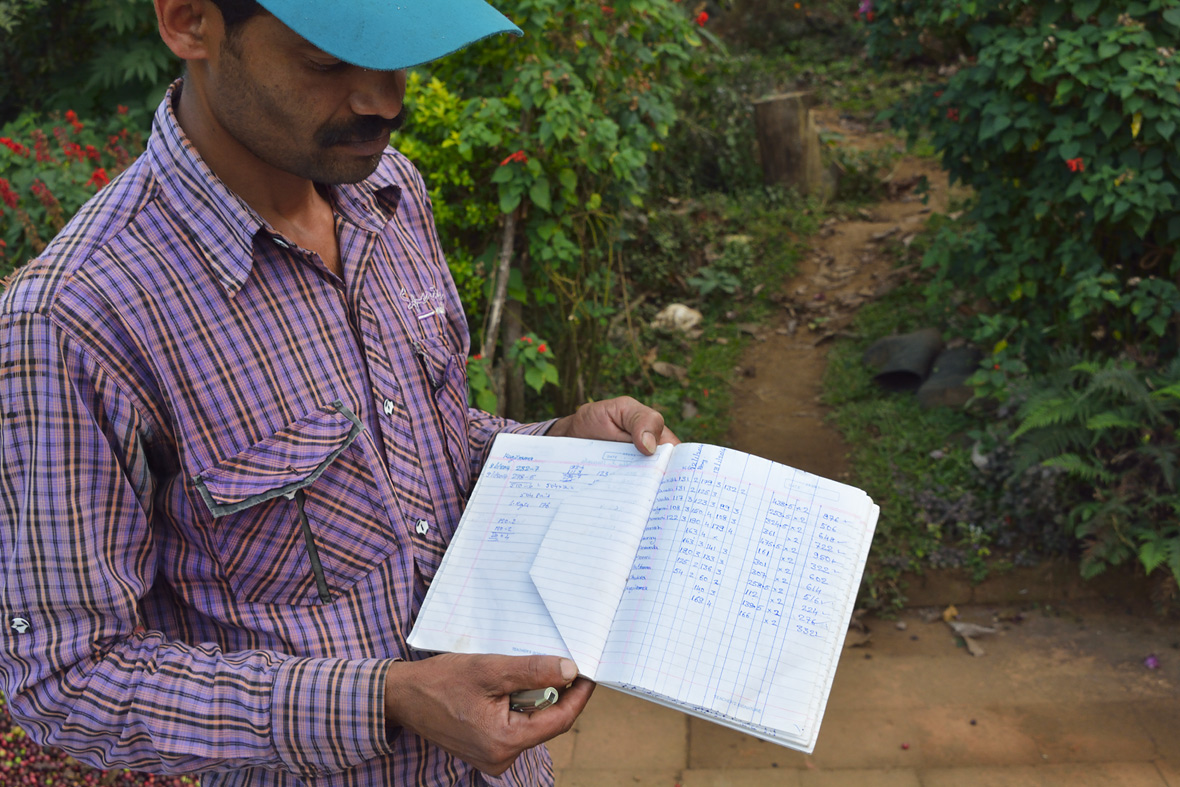
... and the weight per person is entered in a notebook |
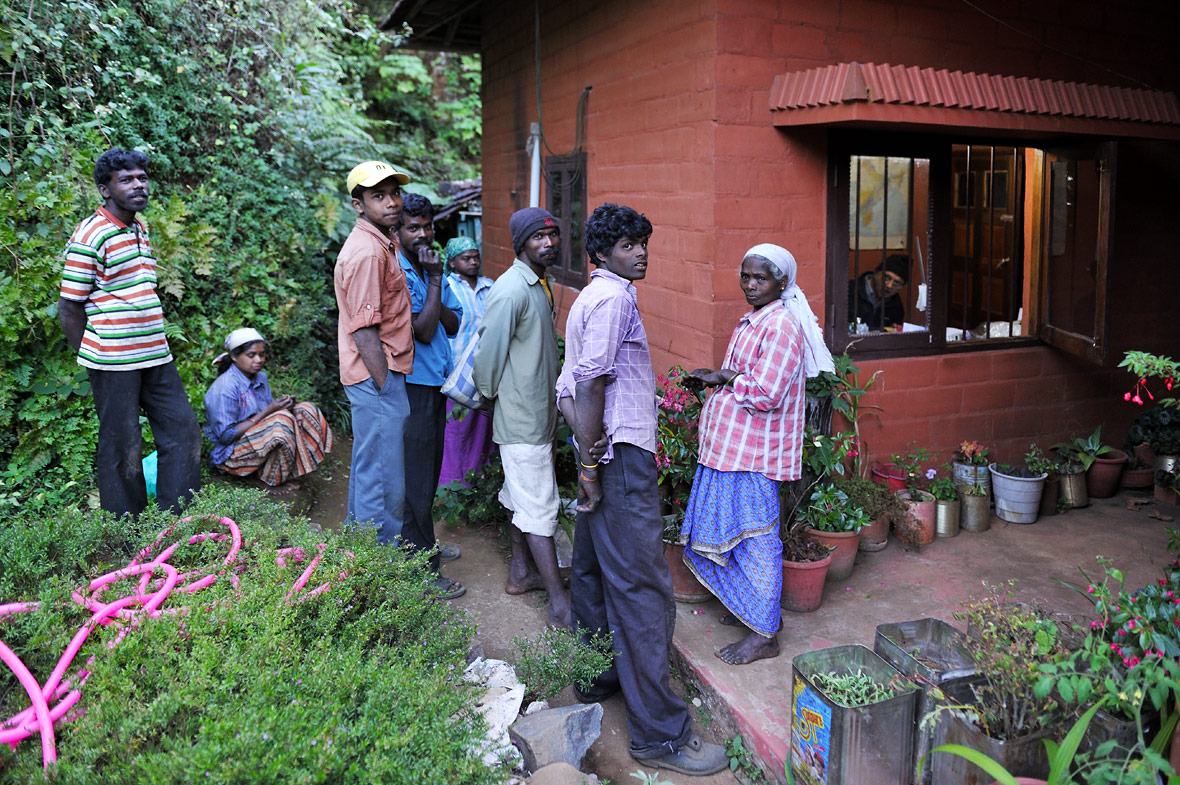
Tuesday is payday: after the work, Suresh Chengappa pays the wages
|
After the harvest, coffee in India is processed using both “the dry and the wet processing”
methods. The dry processing is the traditional method used by most
small famers. As per this method, the coffee cherries are placed on a
drying area immediately after harvesting, so that they dry in their
pods under the sun. According to the wet processing method however, the
coffee beans are first washed and soaked in water after harvesting,
dehusked and then left to dry in the sun in their pods. The coffee lies
in the sun for about a week and is turned over again and again to
prevent it from turning moldy. In case the weather is rainy or
unstable, the coffee is heaped together in the evening and covered with
tarpaulins so that it doesn't get wet. Coffee that is collected from
the floor is specially cleaned and separated from from twigs, stones
and leaves.
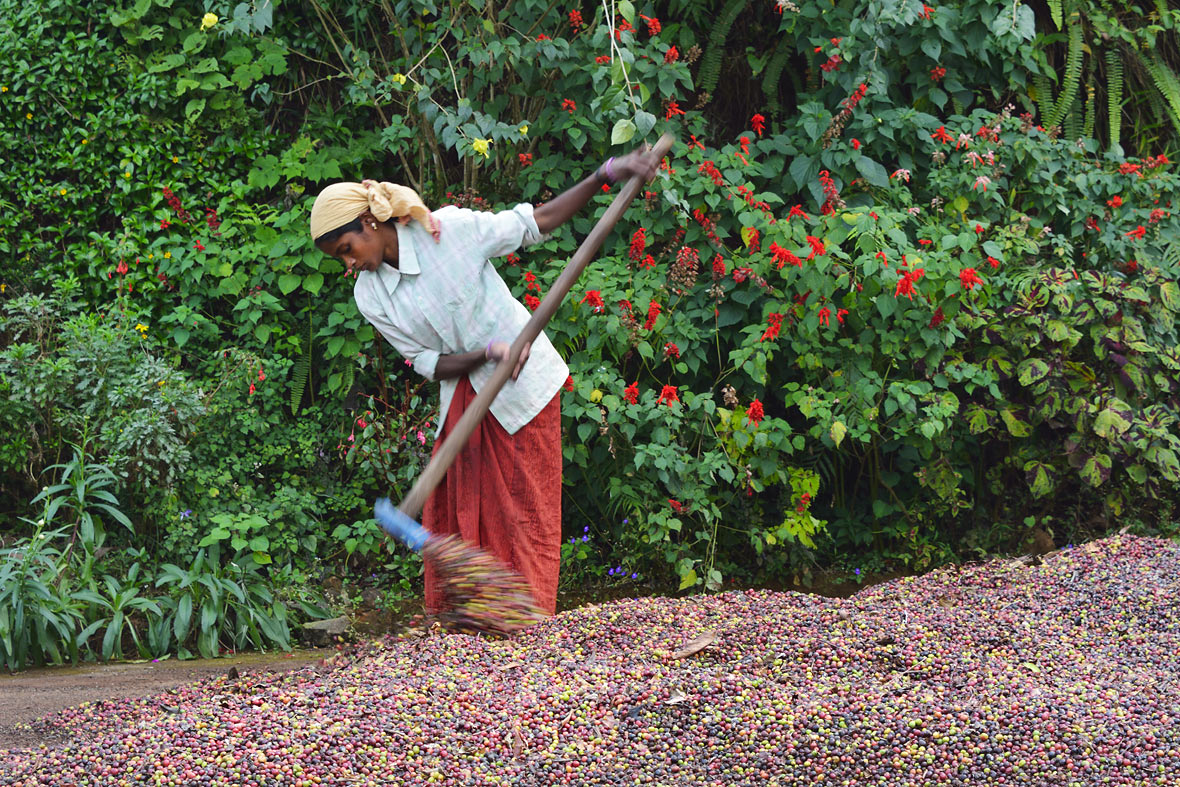 The worker turns the coffee regularly to prevent mould formation
The worker turns the coffee regularly to prevent mould formation
|
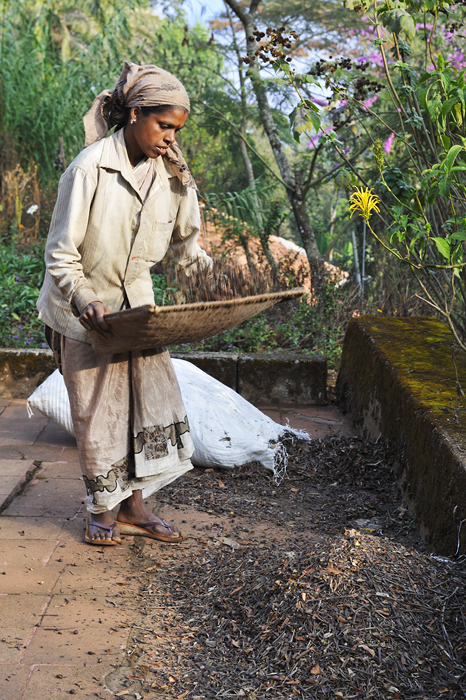
The worker cleans coffee collected from the ground ... |
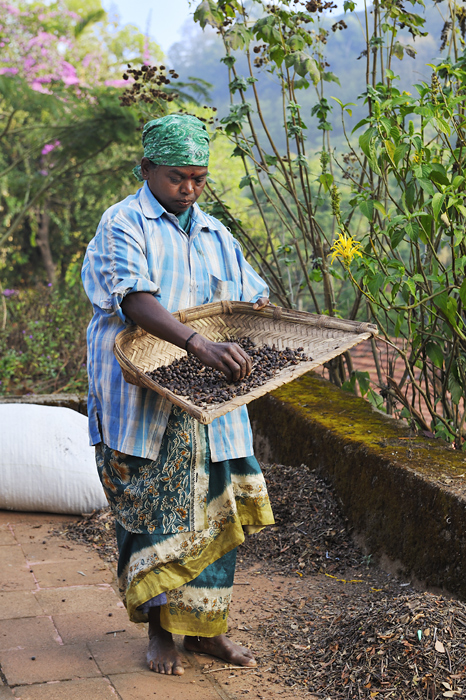
... throwing out earth, twigs and pebbles
|
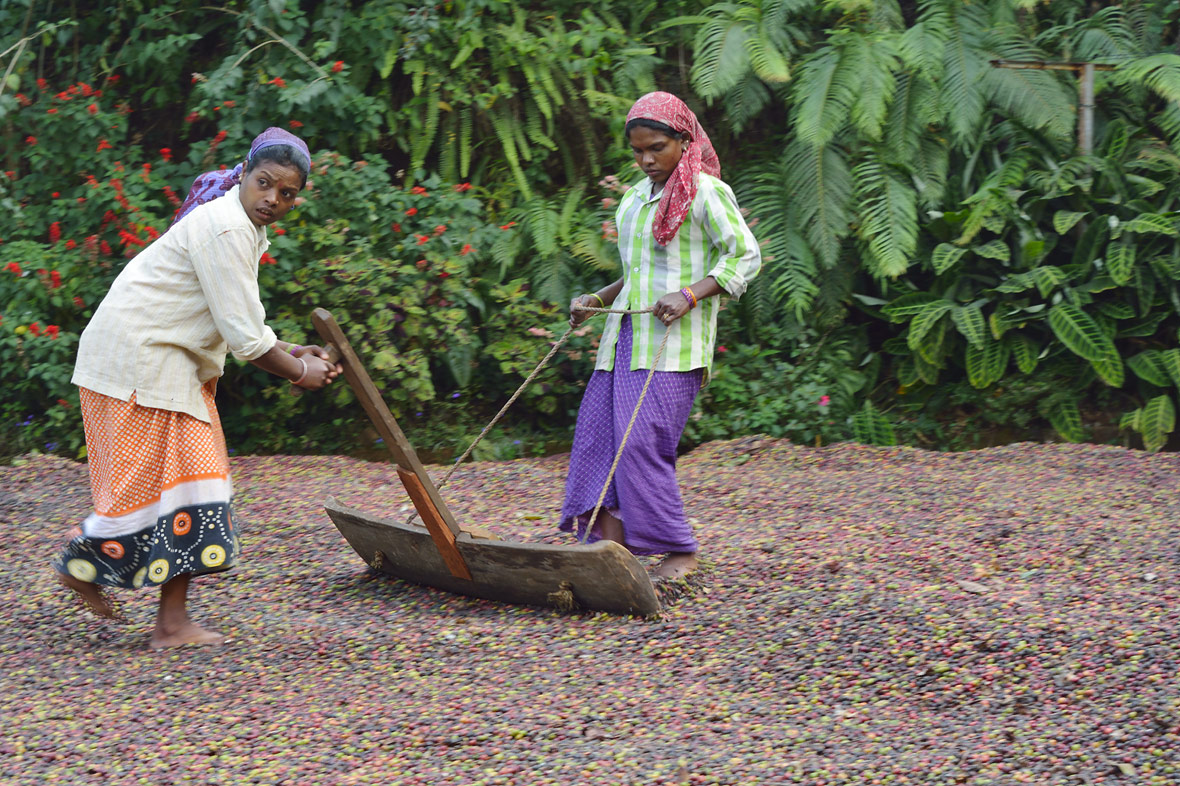
She spreads the coffee in the sun for drying ... |
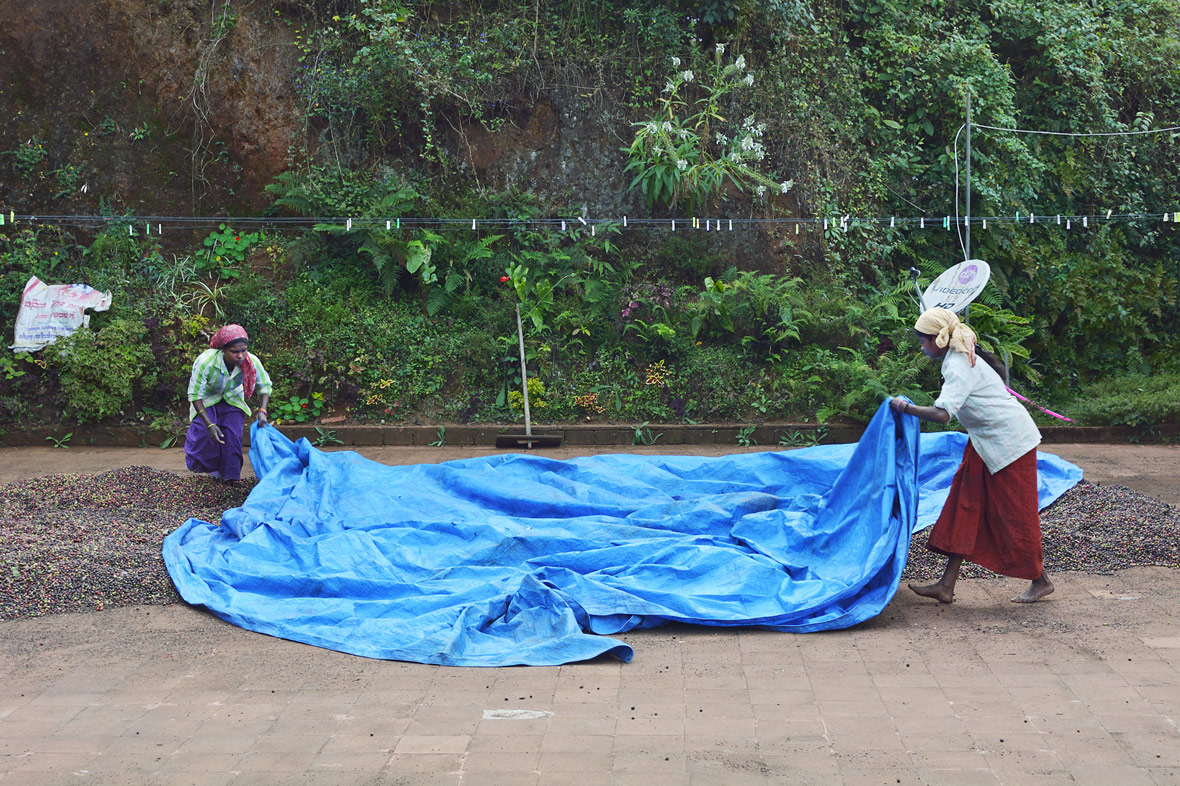
... and covers it in the evenings to protect it from the rain
|
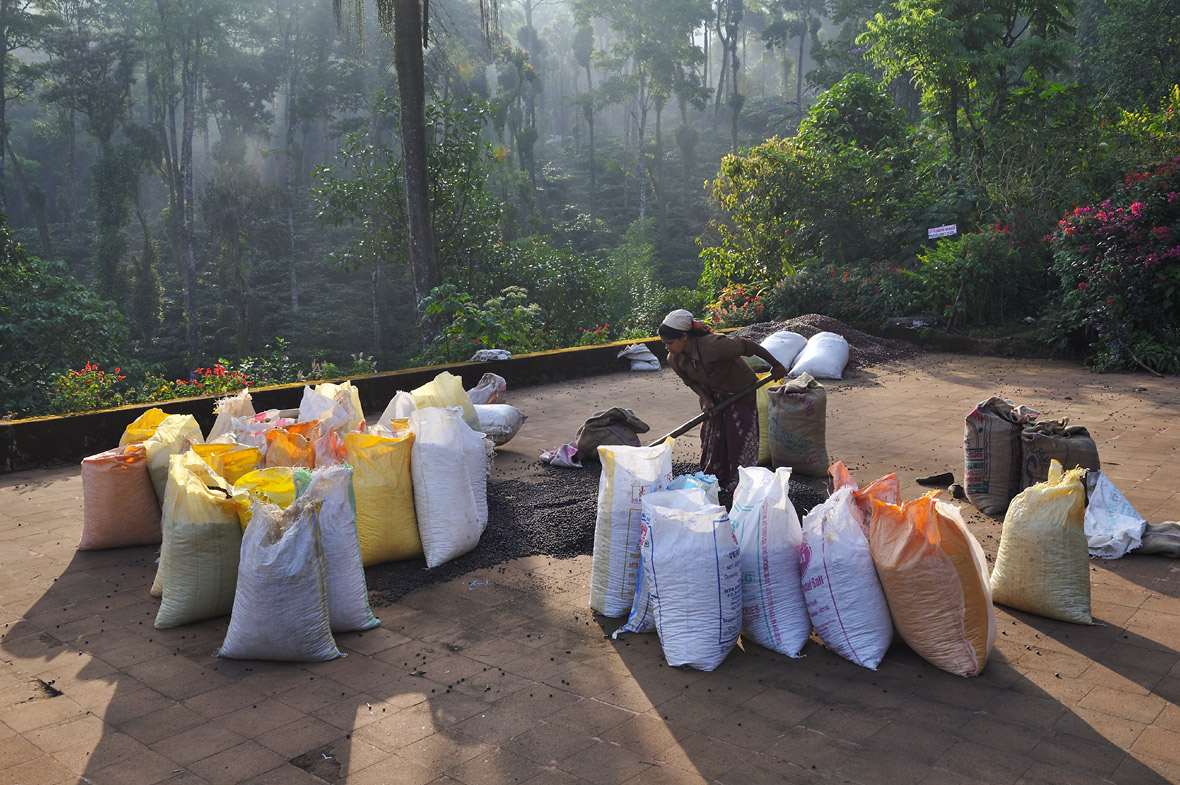
Once the coffee is dry, it is packed for transport to the 'Coffee Mill'
After the end of harvesting and before the next flowering season, the
coffee beans are regularly trimmed. In this case, 3-4 workers work to
remove all unproductive branches from tree to tree. Thus, before the
next flowering season, all the fruitful branches have more vitality for
the maturation of the coffee cherries, which increases the overall
productivity. But I have to say that a clipped field is not a pleasant
sight ...
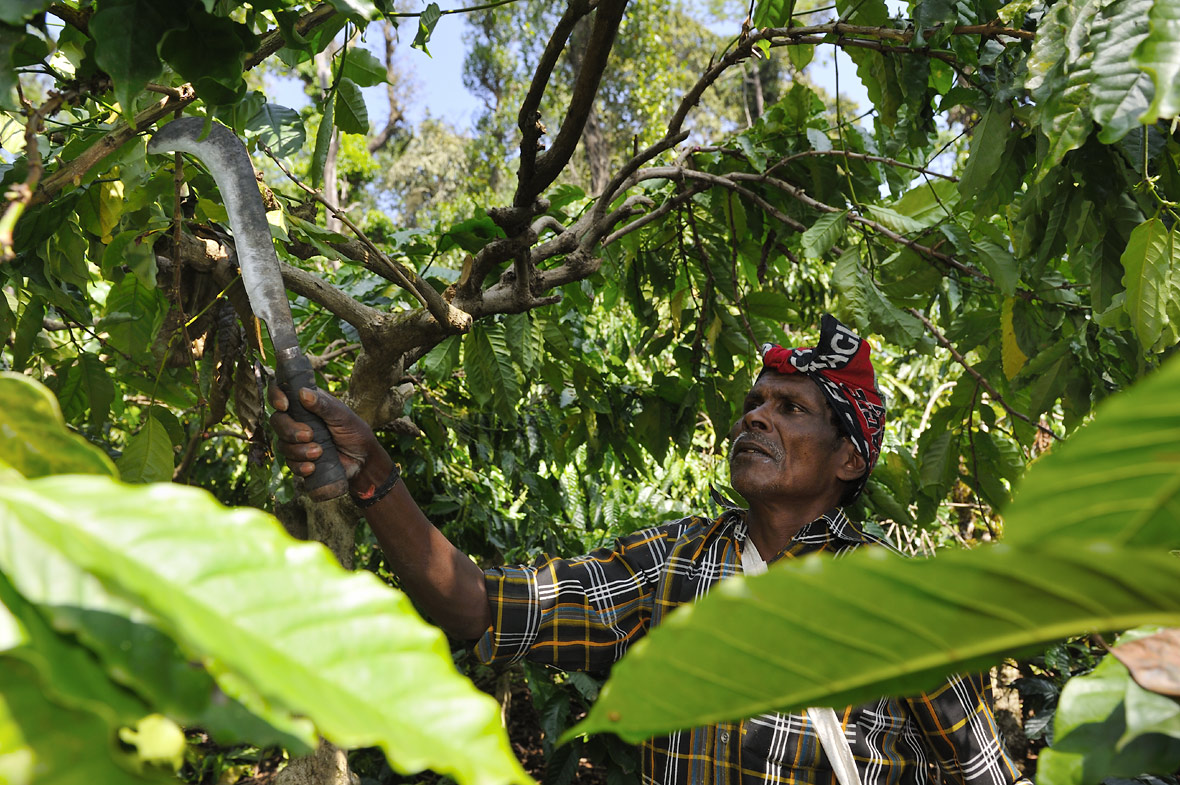
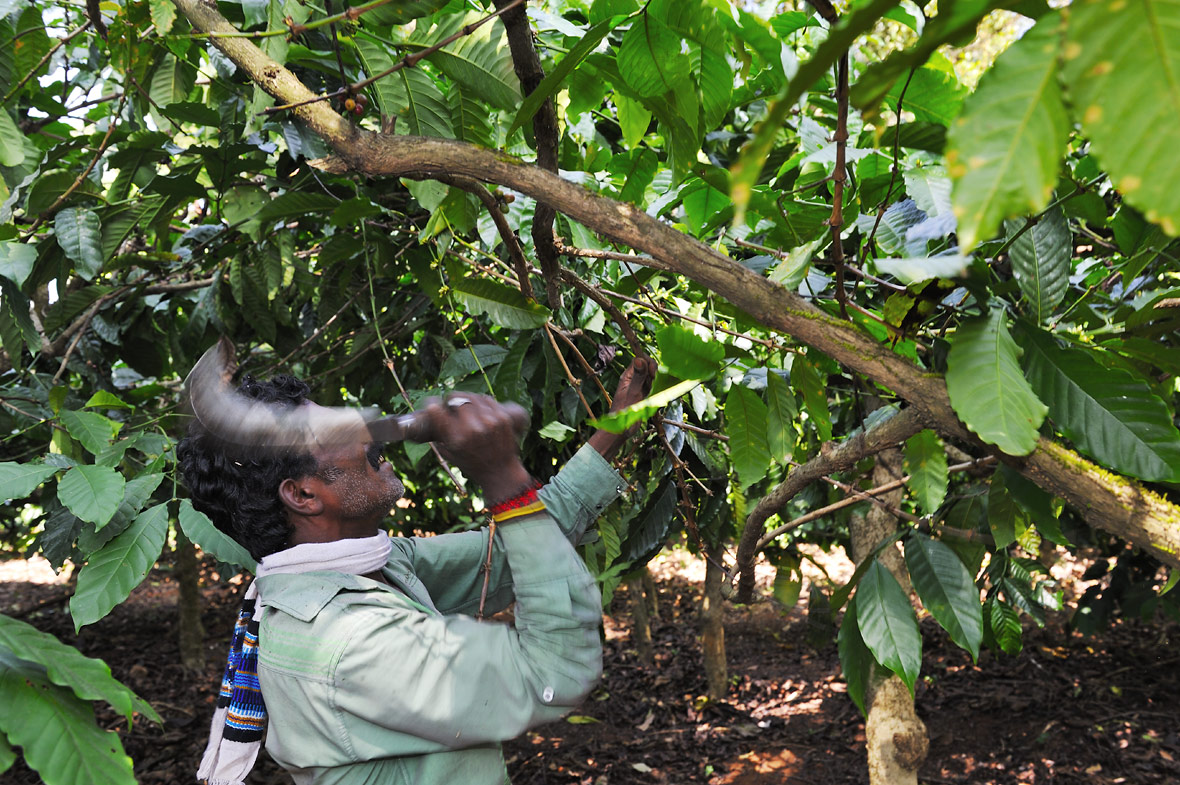
Unproductive branches are hacked off ... |
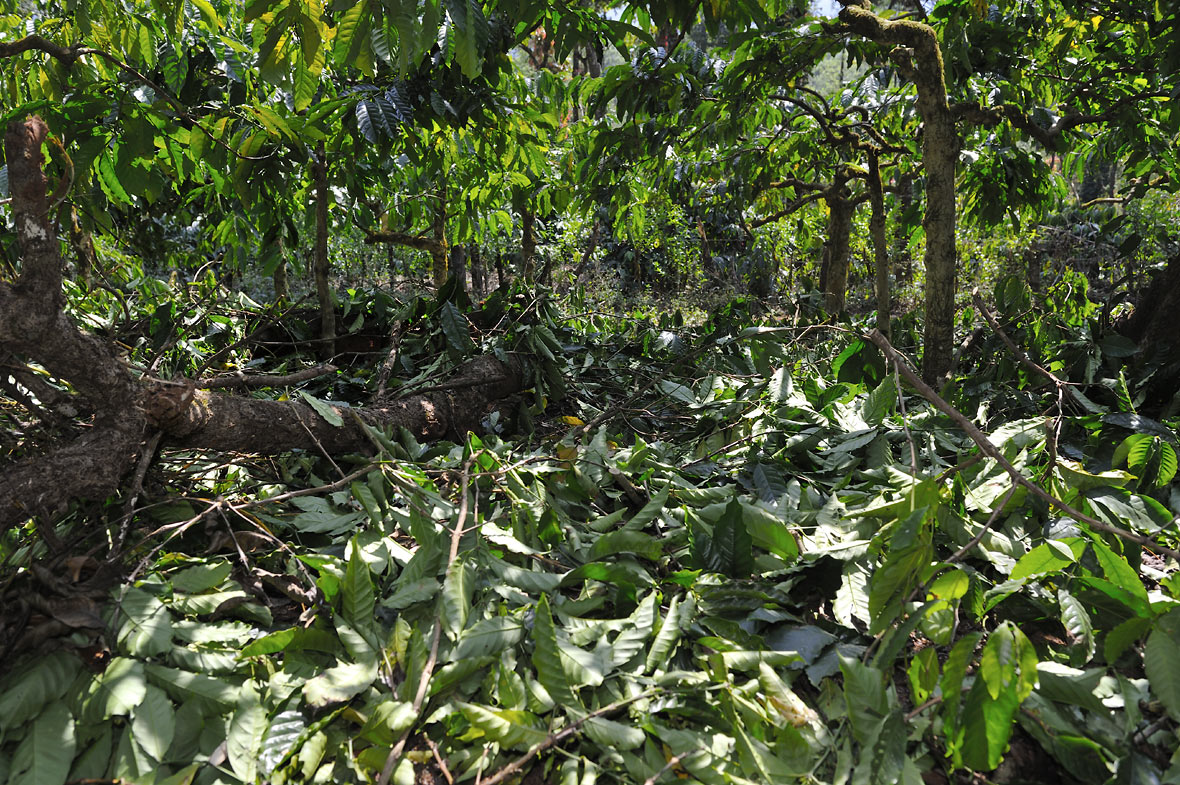
... which rot and are used as dung
|
The majority of India's coffee production is exported and the domestic
industry mainly focuses its marketing efforts on the promotion of
exports. Although the popularity of coffee is rising slowly in India,
but the domestic consumption, which could increase demand
significantly, has been stagnant for years and is still only limited to
parts of southern India where coffee has traditionally been more
widespread. The main drivers of the Indian coffee market are Indian
filter coffee, served primarily in vegetarian restaurants ('darshinis')
in South India - which is a good coffee, similar to the filter coffee
in Germany, only a little bit less and stronger - as well as the
consumption of instant coffee in many parts of North India, which
tastes more like tea with a coffee flavor - provided one can taste the
coffee at all through the large amounts of sugar!
Although cafés and coffeehouse chains are spreading slowly but
surely in India, yet the annual consumption of coffee in 2012 amounted
to no more than 25,000 60-kg bags, or about 1,500 tons. Cafés do
not (yet) sell enough coffee to cause a noticeable increase in domestic
coffee consumption. In the longer term, cafés are likely to play
a significant role in changing coffee consumption and consumer
attitudes toward coffee, but the immediate effects on consumption are
still modest at the moment.
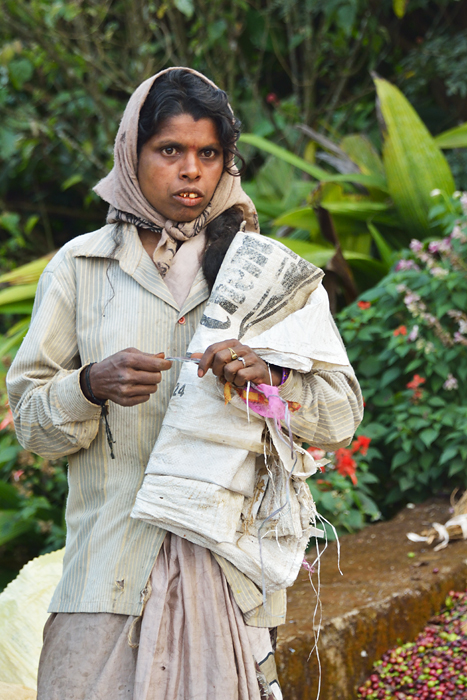
Portrait of a worker ...
|
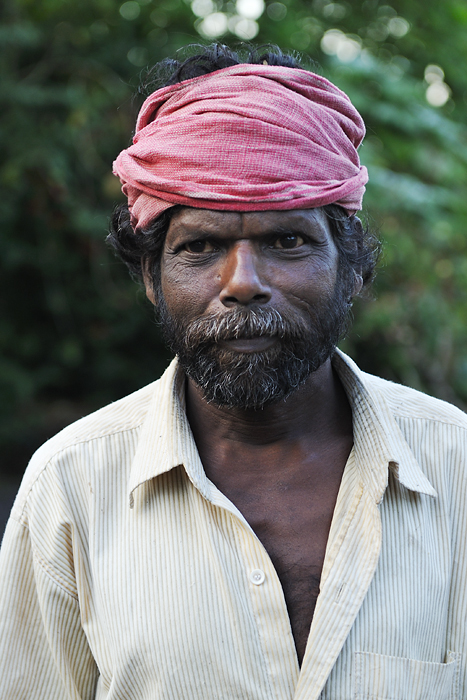
... and another at the Coffee-Farm “Honey-Valley”, Karnataka
|
Small farmers usually sell their coffee to on site 'coffee grinders',
who dehusk and clean the coffee. These 'coffee mills' then re-sell the
green coffee to exporters. Larger coffee farmers store their coffee
prior to the sale, so that they can better respond to changing market
prices and then sell their coffee at an opportune time through auctions
or export it directly.
These 'coffee-grinders'
are in fact named incorrectly, because they don't actually grind the
coffee but 'clean' and dehusk it. Two enormous dehusking machines
remove the shells of fifteen tons of dried coffee cherries each day.
The workers unload and weigh the sacks delivered by the neighbouring
coffee farmers. Then, they open it and pour the coffee into a canal,
from where it begins its "dehusking journey" via an elevator system.
|
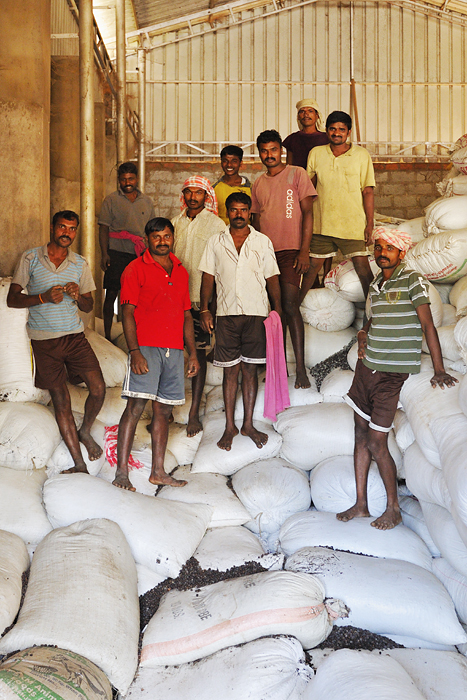
Workers at the Coffee Mill in Napoklu |
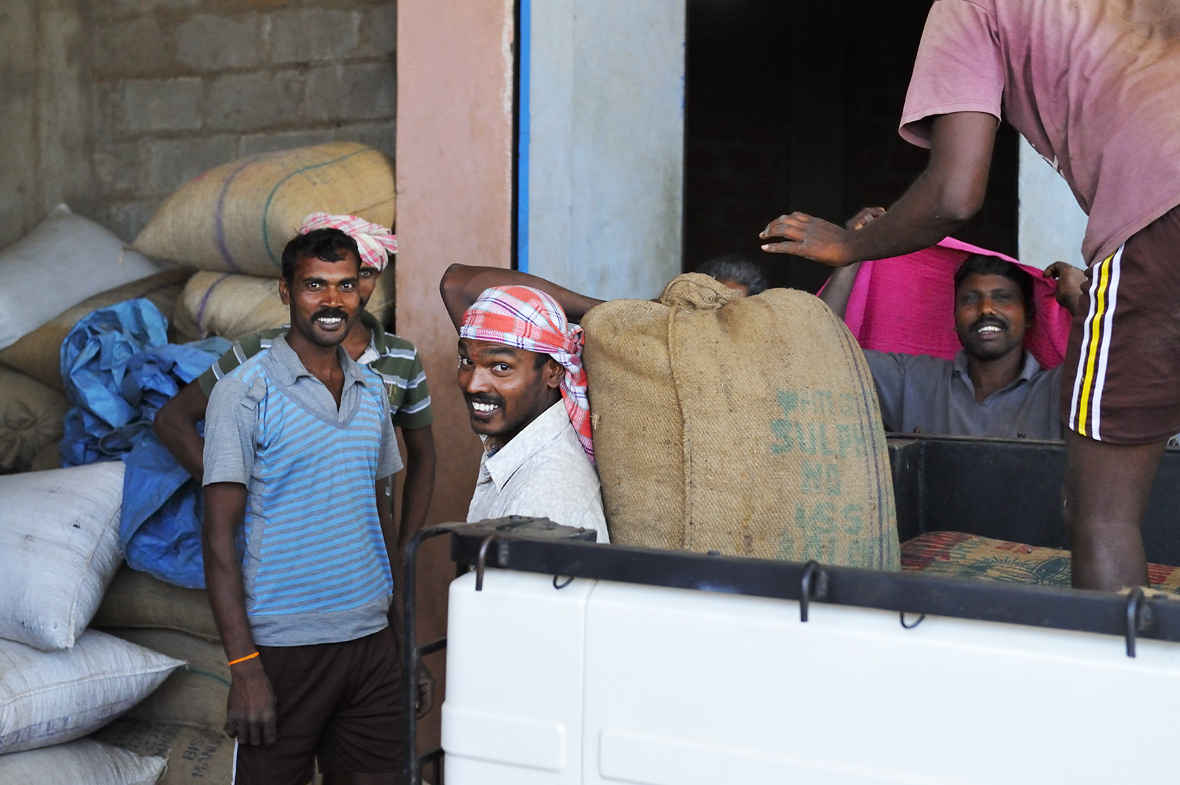
Unloading the coffee-sacks
.
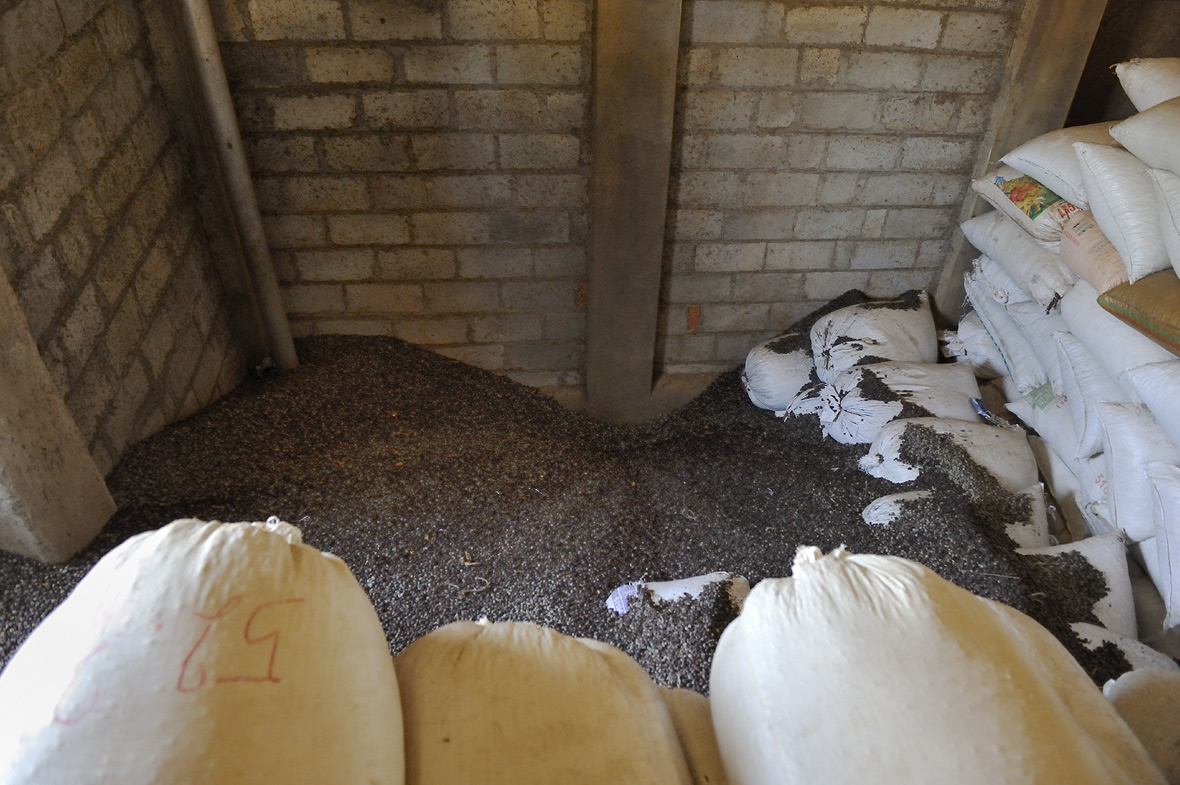
Here begins the coffee's “journey” to being dehusked
|
First, the elevator takes
the coffee upwards to a sieve drum with sharp-edged openings on the
side. The dry coffee fruits are pressed from the inside of the drum,
through the sieve outside: this process separates the shells from the
beans. The lighter, crushed shell parts are siphoned off by a vacuum
and transported into the open, collected, and later used as fertilizer.
|
|
|
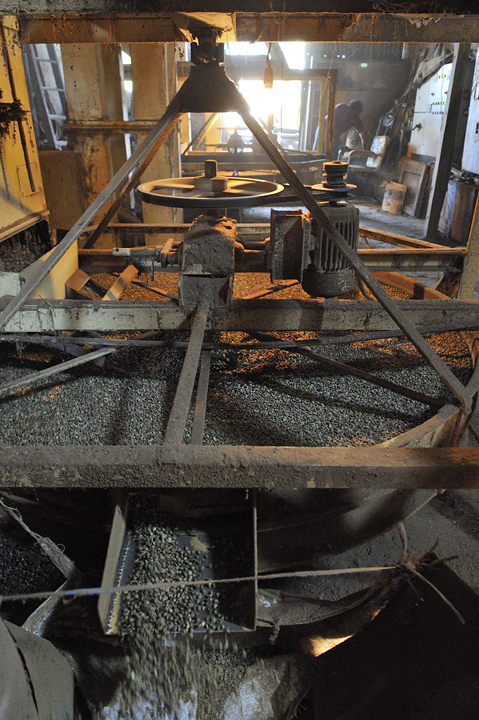
|
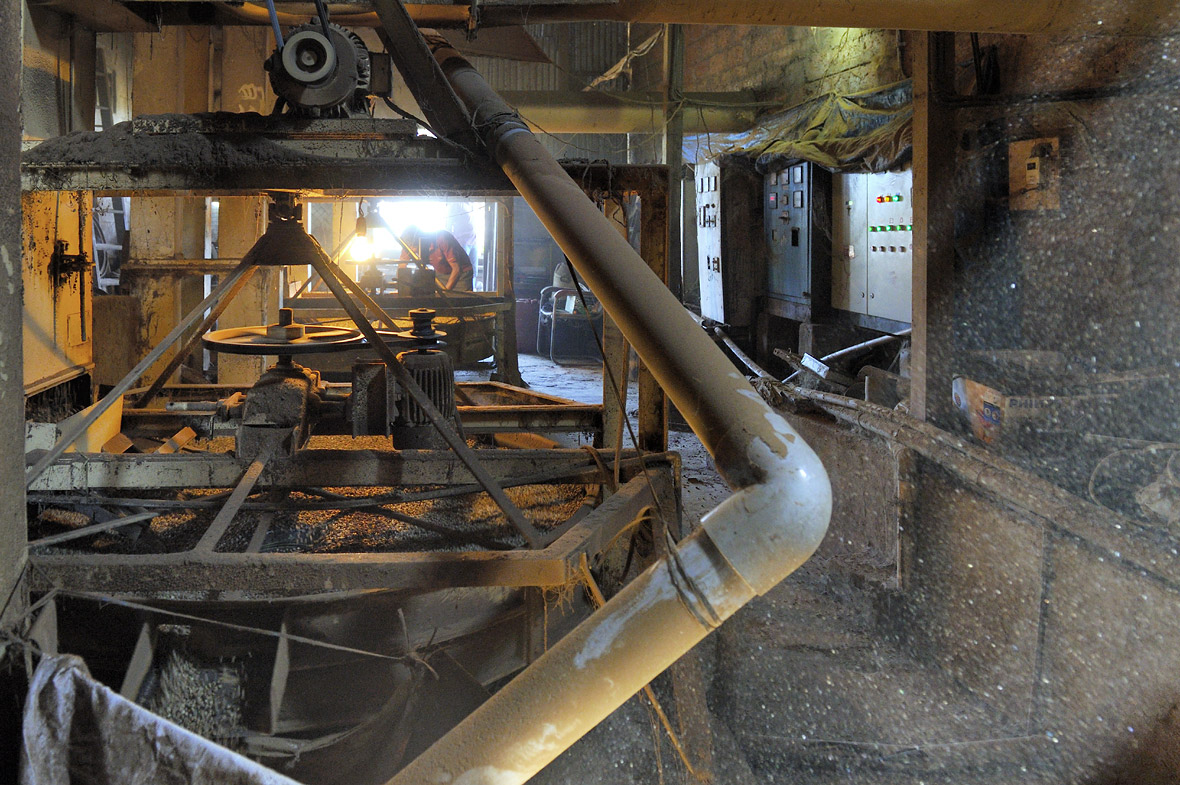
Next,
the vibrating machine separates small, light foreign bodies such as
twigs, tiny clods of earth or pebbles. The circular vibrating and swing
movements causes the lighter particles to shift to one side so that
they can be sorted. This process is repeated 2-3 times to increase its
accuracy, and soon the coffee is much cleaner. Certain defects that can
not be sorted through weight differences, such as black and 'burnt'
beans, are pushed off to one side to be sorted later if required. The
coffee beans fall down through a tube and are directed to a special
room. Finally, one can see the clean, fairly uniform green coffee.
Dehusked coffee in the Coffee Mill in Napoklu
|
I thank Mr. Suresh Chengappa and his wife for the opportunity to take photos on their
farm, and also for their friendliness and readiness to explain everything. I would also
like to thank the workers on the farm whom I bothered on occasion with my camera.
|
|
|
|